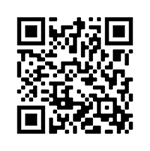Webinar
The 1st Tominaga Lab International Webinar
〜Sustainable Development through Science and Technology〜
The Best Question Award
It has been selected as follows. Congratulation!
- Simpliste Dusabe
- Abie Aprianata
- Zulfadli
- Fithra Malvarinda
- Reni Anggraini
It is my sincere pleasure to inform you about “The 1st Tominaga Laboratory International Webinar” with the theme of “Sustainable Development through Science and Technology” which will be held on Wednesday, December 22nd 2021 via Zoom meeting (online). This web conference is the get together of partner faculties from Indonesian universities that have been in collaboration with our laboratory. The vision of this event is to strengthen the good relationship between us and our partner faculties. We want to try to bring this event into an annual webinar series.
Speakers
Prof. Dr. rer. nat. Fredy Kurniawan, S.Si., M.Si.
Institut Teknologi Sepuluh Nopember (ITS), Surabaya
Topic: E-tongue based QCM Sensor for Food Analysis
Dr. Eng. Raden Darmawan, S.T., M.T.
Institut Teknologi Sepuluh Nopember (ITS), Surabaya
Topic: Single Chamber-MFC Performance using Waste Substrates and Rice Bran Modified Carbon Felt
Dr. Mardwita, S.T., M.T.
Universitas Muhammadiyah Palembang, Palembang
Topic: Solid Catalysts and Electromagnetic Waves for Chemical Reaction
Jatmoko Awali, S.T., M.T.
Institut Teknologi Kalimantan (ITK), Balikpapan
Topic: Additive Manufacturing with Welding Combination
Dr. Leily Nurul Komariah, S.T., M.T.
Universitas Sriwijaya, Palembang
Topic: Biodiesel Handling and Storage; The Analysis of Corrosion and Contamination
Prof. Dr. Eng. Reni Desmiarti, S.T., M.T.
Universitas Bung Hatta, Padang
Topic: Production of Precipitated Calcium Carbonate Particles using Plug Flow Bubble Column
Date/Time
Wednesday, December 22nd 2021
15:00 〜 18:40 JST (GMT+9)
14:00 〜 17:40 WITA (GMT+8)
13:00 〜 16:40 WIB (GMT+7)
Place
Online via ZOOM
Benefit
E-certificate
5 students will be selected as the Best Question Award
(The selected student will get some souvenirs from Tominaga Lab., JAPAN)
Registration
https://bit.ly/tominagawebinar

General Overview & Rundown
Lecture Outline Introduction
Prof. Dr. rer. nat. Fredy Kurniawan, S.Si., M.Si.
Institut Teknologi Sepuluh Nopember (ITS), Surabaya
“E-tongue based on QCM Sensor for Food Analysis”
The modified QCM sensor gives different responses to porcine and bovine gelatin for food analysis. Bovine gelatin shows decreasing in frequency, while porcine gelatin shows increasing in frequency.
Dr. Eng. Raden Darmawan, S.T., M.T.
Institut Teknologi Sepuluh Nopember (ITS), Surabaya
“Single Chamber – Microbial Fuel Cell Performance using Waste Substrates and Rice Bran Modified Carbon Felt”
Microbial Fuel Cells (MFC) is a bioreactor which uses microbes to generate electricity. One of the crucial elements of MFC is microbial culture. Microbes use organic compounds in wastewater to yield electrons and protons, then transport their electrons to the electrode by nanowires or mediators. This study aims to investigate the performance analysis including the bacterial community between pure “Sidoarjo” mud and the substrate mixture (“Sidoarjo” Mud-Stillage and “Sidoarjo” Mud Molasses) along with the effect of rice bran modified carbon felt thickness (2F and 3F) on MFC performance.
Dr. Mardwita, S.T., M.T.
Universitas Muhammadiyah Palembang, Palembang
“Solid Catalysts and Electromagnetic Waves for Chemical Reaction”
Our research focused on the effects of solid catalysts for reaction. We use alumina and silica as support, chromium and cobalt as main metal for methane combustion. The catalysts were prepared by using conventional impregnation method. Our results indicate that the cobalt and chromium metal has different interaction with the support. Chromium tend to form smaller metal particle size, strong interaction to the support and higher thermal stability after 5 hours tested. Electromagnetic waves were used for biodiesel reaction from waste cooking oil. Our results showed that the electromagnetic waves were contributed to faster and lower heat for the reaction.
Jatmoko Awali, S.T., M.T.
Institut Teknologi Kalimantan (ITK), Balikpapan
“Additive Manufacturing with Welding Combination”
Additive manufacturing is a manufacturing process to create physical objects with the method of adding material layer by layer, the application of this method is used in industry, architecture, toys and entertainment. In the welding industry, filler material is used to apply the Additive manufacturing method with the term Wire Arc Additive Manufacturing (WAAM) which is a welding method that can be used to make products with complex shapes. The working principle of WAAM is similar to the 3D printing process. The WAAM method is carried out by melting electrode wires in layers to produce new materials. The type of welding used can combine 2 welding methods, namely GMAW and FCAW which are applied alternately. The two types of welding were chosen because they use non-consumable electrodes and different strength values, which hopefully the combination of these 2 welding methods can be applied industrially.
Dr. Leily Nurul Komariah, S.T., M.T.
Universitas Sriwijaya, Palembang
“Biodiesel Handling and Storage; the Analysis of Corrosion and Contamination”
Indonesia is now known as a country with a mandatory policy of biodiesel utilization with most of the blends. The biodiesel blending ratio in conventional diesel fuel has now reached 30% and will continue to be increased to 50%. Before it is used in diesel engines, biodiesel will go through storage, distribution and flow systems like other fuel oils. This has occurred because biodiesel tends to be more susceptible to contamination and degradation and is more likely to cause corrosion than conventional diesel fuel. Biodiesel handling and storage techniques must take into consideration many interacting factors such as oxidation stability, material type and strength, environmental conditions and engine operating system.
Prof. Dr. Eng. Reni Desmiarti, S.T., M.T.
Universitas Bung Hatta, Padang
“Production of Precipitated Calcium Carbonate Particles from Limestone West Sumatra Indonesia using Plug Flow Bubble Column”
Precipitated Calcium Carbonate (PCC) is highly used in several applications in industries such as paper making, paint, drug carrier and hydrophobic coating. The raw material of PCC is limestone. Design of reactors such as chemical precipitation, mineral carbonation and ultrasonic-assisted were studied to produce PCC by previous studies. It was indicate that design of reactor is very important aspect to increase the quality of PCC. The aimed of this study was to investigate the effects of flow rate and concentration of ammonium chloride on the production of PCC using Plug Flow Bubble Column Reactor.

